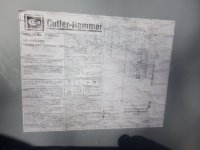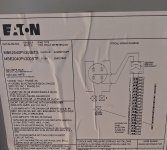Doc13067
Senior Member
- Location
- Bucks County/Philadelphia, PA USA
So i discovered this a few years back but Siemens, Eaton BR, and QO I have confirmed inside the main breaker a cross happens so that what you think is Phase A on the main breaker line side lug is actually Phase B when it comes out the load side of the breaker. Therefore the left bus is actually connected to the right service or feeder conductor and vice versa. Does anyone know why this is and does it cause a problem? And if we are trying to put Phase A on the black conductor and Phase B on the red conductor but the standard is that black should be on the left and red should be on the right, well that is just impossible. Are 3 phase panels phased the way they “should” be?



